Does Cordyceps Really Grow On Bugs? Know The Difference
Contents
You might have seen the popular video from the BBC, which shows Cordyceps fungus turning ants into Zombies.
Or maybe you’ve played the video game “The Last of Us”, where Cordyceps infects humans and causes a global collapse.
You might be wondering…
“Is there any truth to this? Should I be concerned about Cordyceps turning me into a zombie?”
The truth is, there are hundreds of species of Corydceps, and yes, they are all parasitic – mainly infecting ants and other insects, causing them to go crazy, do their bidding, and eventually fruit through their corpse.
Scary stuff if you’re an ant, but we humans don’t need to be concerned.
So what about medicinal Cordyceps? Does it really grow on bugs?
Different Species of Cordyceps
When it comes to medicinal mushrooms, there are two types of Cordyceps that are important.
Namely, Cordyceps sinensis and Cordyceps militaris.
The most famous of these, Cordyceps sinensis, does actually grow on insects.
It parasitizes the larvae of ghost moths, and eventually grows from the head of a dead caterpillar high in the Himalayan mountains. That’s why it is sometimes referred to as the “Caterpillar fungus.”
It’s actually pretty creepy.
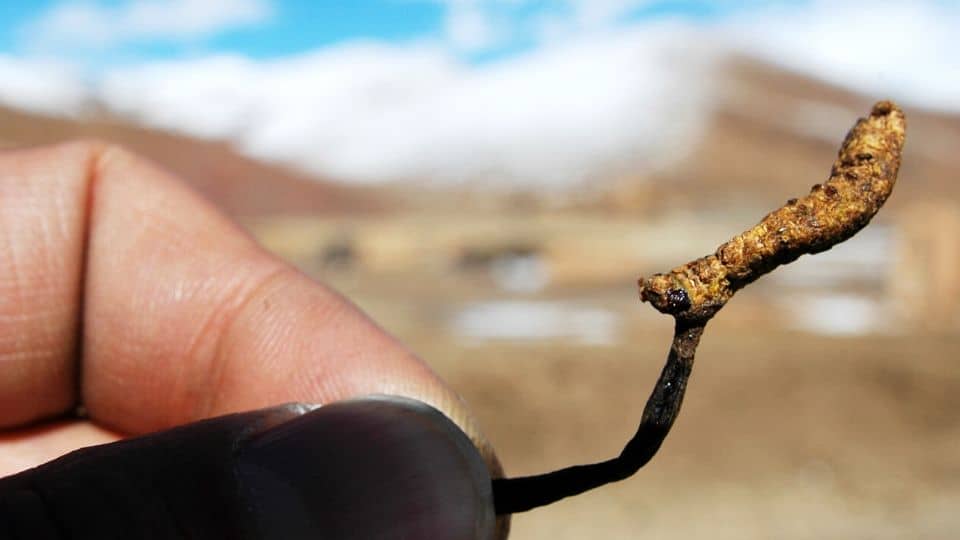
Cordyceps sinensis is a powerful medicinal mushroom with a long history of use in traditional Chinese medicine.
It is known for many medicinal benefits, but most prominently it is thought to improve the efficiency in which we transport oxygen from our lungs to the rest of our body – helping with endurance, physical stamina and athletic performance*.
The problem with C. sinensis however, is that the fruiting body can’t yet be cultivated.
The key word is “yet”.
I have actually heard that some cultivators are slowly figuring out how to grow it, but as of now, it is not being cultivated commercially.
Instead, it needs to be harvested from the wild. Unfortunately, it is very rare, and only occurs at high elevations in the Tibetan plateau.

Because of its rarity, Cordyceps sinensis fruiting body is insanely expensive.
For example, a small 10 gram bag of Cordyceps can retail for the equivalent of $700 USD.
To put that in perspective, 10 grams of gold is worth $500 – making Cordyceps sinensis worth literally more than its weight in gold.
At that price, it really makes no sense to use Cordyceps sinensis as a medicinal supplement.
Even worse, Cordyceps sinensis is becoming overharvested, and is even listed as an endangered species.
The mycelium of Cordyceps sinensis however can be grown on grain, or in liquid fermentation, but you will not be able to get the valuable fruiting bodies this way. That’s why if you ever buy a supplement that is “Cordyceps sinensis” fruiting bodies, and you didn’t pay an insane amount for it – you are probably not getting what you thought.
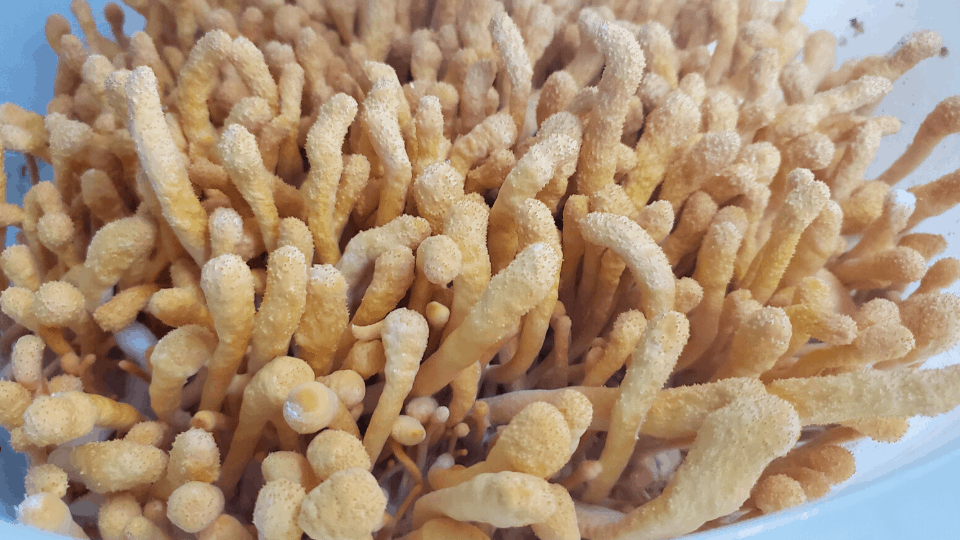
Cultivated Cordyceps
Luckily, there is another species of Cordyceps with a similar medicinal profile that actually can be grown commercially – without using any insects!
It’s called Cordyceps militaris, and is a super popular medicinal mushroom with a much better price point.
Similar to Cordyceps sinensis, C. militaris is traditionally used for fatigue, general weakness, and improved respiratory function*.
People tend to think of it as the “athletes mushroom”.
How It Grows
Cordyceps militaris grows differently than most other medicinal mushrooms.
Mushrooms like Turkey tail and Reishi are grown on logs, but Cordyceps grows best on a substrate of white rice and soy.
Keep in mind, even though it grows on rice, true Cordyceps militaris is not a “mycelium on grain” product, because the mushroom does actually produce a fruiting body that can be harvested and processed into a supplement.
The process involves hydrating and sterilizing a mixture of rice and soy in a tray, typically 6 parts rice and 1 part soy.
The tray is covered by plastic, and the rim is wrapped with a cloth that serves as a filter.
This substrate needs to be steam sterilized in order to kill off any competing bacteria, fungus or molds and give the Cordyceps the best chance to take over.
Once removed from steam sterilization and cooled, the rice/soy mixture is “inoculated” with the mycelium of Cordyceps militaris. In the sterile environment, it is free to grow throughout the mixture.
The filter around the rim allows it to breathe without introducing any competing organisms.
Once the mycelium has completely taken over the substrate, the Cordyceps are brought into a fruiting room.
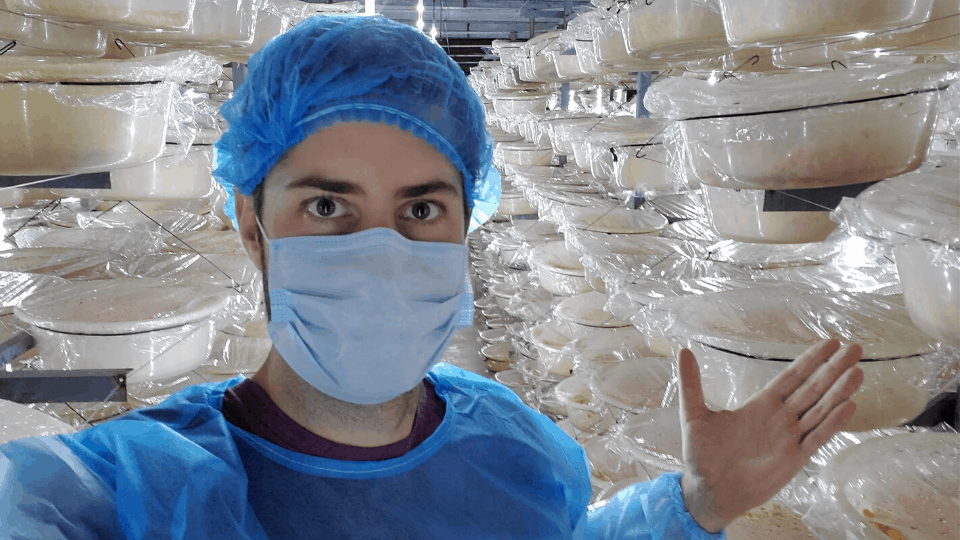
Temperatures are low – around 13 degrees celsius, which encourages slow but steady growth of the mushroom.
This slow growth increases the level of active compounds in the mushroom. The fruiting room also has blue LED lights, which encourage more fruiting bodies to form.
After about a month or so in the fruiting environment, the mushrooms are completely grown out and ready to be harvested.
They really do look like cheetos, although much better for you!
From there, the mushroom can be dried, powdered, extracted – and ready to be used as a supplement.
Strain Management Is Key
This process of growing Cordyceps militaris looks pretty simple, but is actually not that easy. Cordyceps cultivation is really dependent on the quality of the strain, and the management of that strain.
It needs to be constantly grown out and cloned in order to maintain viability.
For example, if you store a strain in the fridge without fruiting it for 8 months – which is common practice for most other mushrooms- it probably won’t ever fruit.
But with proper management, it can be grown out over and over… without having to harvest it from the mummified corpses of insects.
So there you have it. Cordyceps does indeed grow on bugs, but depending on the species it doesn’t have to.
So hopefully you weren’t too grossed out by this, and now you know the difference between the two most commonly used species of Cordyceps mushroom.
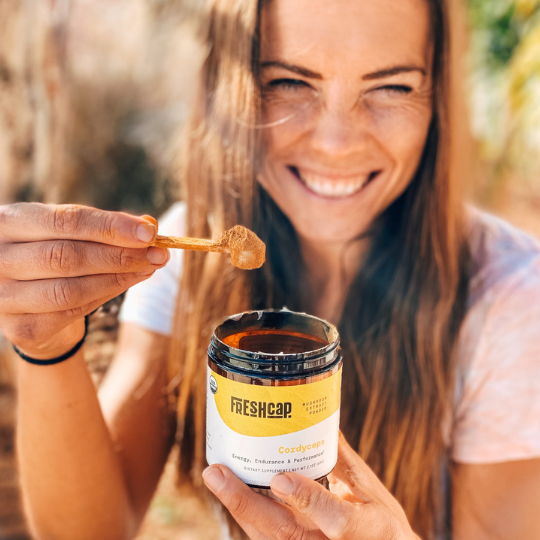
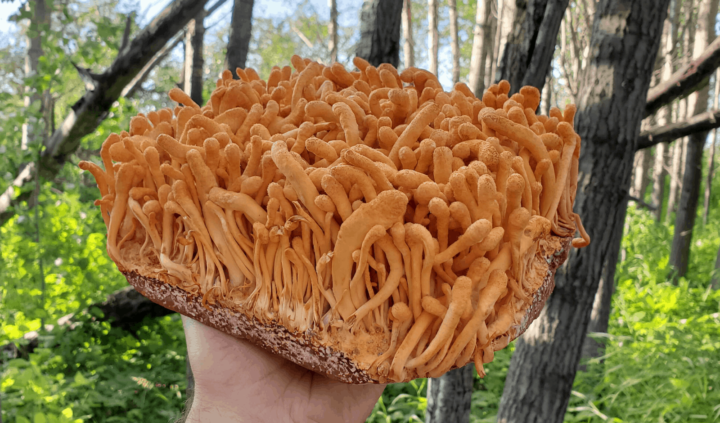
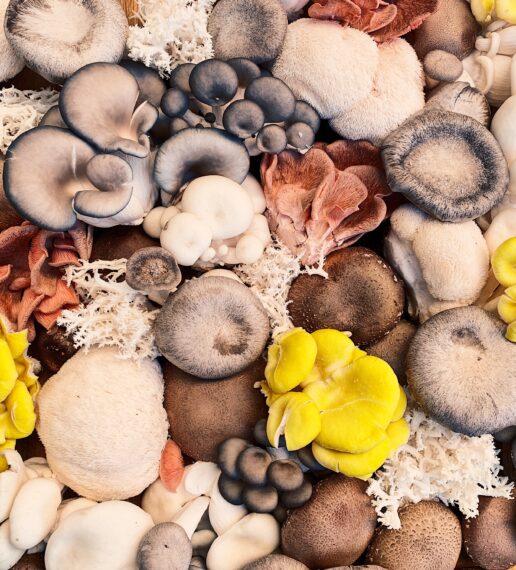

Hi my name is Haritha, I am from India I would like to know the seeding of cordyceps. Please share the detailed information of cordyceps cultivation.
Do you use whole beans or just the hulls? Thanks!
Split bean 🙂